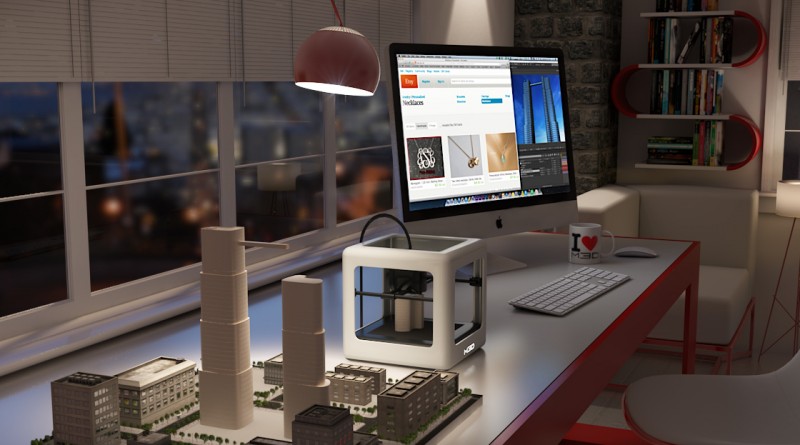Overview Of Low-Priced 3D Printers
Five years ago, we had no idea about 3D printing and what great opportunities it offers for many industries and niches. But today, the average user can easily buy a 3D printer that was considered an expensive gimmick a couple of years ago. We are not aiming to find the most functional and easy-to-use 3D printing device here. We just want to share what low-cost 3D printing devices are available for the average user.
In a nutshell, if you thrive to take to 3D printing at home, you can choose an appropriate type of 3D printer and create interesting items.
Printrbot Simple Metal
Price: around $600
Minimum layer depth: 100 mm
Printing material: PLA, ABS (optional)
Advantages:
- Cost
- Assembly quality
- Print quality
Disadvantages:
- Limited printing area
- Slow speed
That being said, this 3D printer version is an updated model of a well-known Printbot Simple. As a result, we get a metal casing and aluminum tuber. There is a specific prod for propitious calibration measurement in Z-surface. The standard equipment allows printing from PLA, but after the installation of aluminum platform Mic 6, we can print with plastic material called ABS as well.
Simple Metal has a strong metal casing and performs quite a good printing quality. In addition, there is an open access to the source code. The thing is that it’s not the most user-friendly 3D printer out there: sometimes there are difficulties with the filament supply system that often results in tuber’s spray nozzle clamping.
Still and all, the printing device has 92% of positive feedbacks!
Sharebot KIWI
Price: from $860
Size: 140 x 100 x 100 mm
Minimum layer depth: 100 mm
Advantages:
- Cost
- Assembly quality
- Print quality
Disadvantages:
- No heating platform
- Slow speed
Sharebot produces one of the most admissive and rugged 3D printers (FDN). It has the following print sizes: 140 x 100 x 100 mm, and the device itself is 310 x 330 x 350 mm. Little effort is required for redaction as the printing device is completed with a popular software (open license Slic3r).
When it comes to assembly quality, we still haven’t seen a similar printer within such price tier. However, Sharebot KIWI has its cons as well, specifically, the redaction is limited by a small space and has no heating platform.
FlashForge Creator (FF3DP)
Price: from $98
Size: 225 x 145 x 150 mm
Minimum layer depth: 100 mm
Printing material: PLA
Advantages:
- Cost
- Heating platform
- Availability of printing materials
- Double tuber
Disadvantages:
- Low accuracy
- No peripheral work
- Calibration
This is an advanced model of Replicator by Makerbot fitted with plywood corpus notched out with the help of a laser. It is worth pointing to the predominant features of this 3D printer: a doubled tuber, heating platform, and the control module installed on the front side.
Basically, FlashForge Creator allows producing high-quality printings commonly performed by premium-class 3D printers. Statistics says this type becomes ineffective in 11% of cases. The ease of use is only limited by the disposal of the third-party software with the open code and the installation is rather time consuming. You’ll have to readjust the device from time to time to print accurately, of better quality and for a long-term perspective. However, you’ll most likely be disappointed with its snail speed.
UP mini (Tiertime)
Price: up to $1,000
Size: 120 x 120 x 120 mm
Minimum layer depth: 200 mm
Printing material: PLA
Advantages:
- Printing quality
- Easy of use
- High-quality software
Disadvantages:
- Small working space
- Lack of printing materials
- Makes a lot of noise while printing
The printing device is made by Chinese company Tiertime. It is popular among those engaged in creating entry-level 3D models without many expenditures. It has a small working printing space but there is a bunch of peculiarities making UP Mini the best among its “class-mates”. We only record a fact that the model has a metal casing with punched heating platform allowing to print out with PLA or even ABS plastic.
Thanks to UP Mini, you can print out without any periodical readjustments. Cases of ineffectiveness reach only 11%.
Among the shortcomings of the mentioned 3D printer, we can observe a tiny printing area (due to small sizes of the device), closed software code, no temperature control meaning you cannot use cheap materials.
UP Mini will suit all amateurs because high quality performance, a wide range of settings and cheap printing.
Wanhao Duplicator i3
Price: less $500
Size: 200 x 200 x 180 mm
Minimum layer depth: 100 mm
Printing material: PLA
Advantages:
- Availability of printing materials
- Heating platform
- MK10 Tuber
- Printing quality
Disadvantages:
- Small working space
- Periodical calibration
This 3D printer is closing our list as it is a much-in-demand on the market. Chinese company Wanhao managed to advance a well-known technology and release the upgraded Prusai3 to the market.
It’s of great importance that the device is ready to use right after unpackaging. Here we have an almost perfect balance between cost, quality, and possibilities. For less than $500 you get a full-fledged 3D printer.
Wanhao Duplicator i3 is very easy to adjust and upgrade and has a huge community of users that prefer open-source 3D printing.

